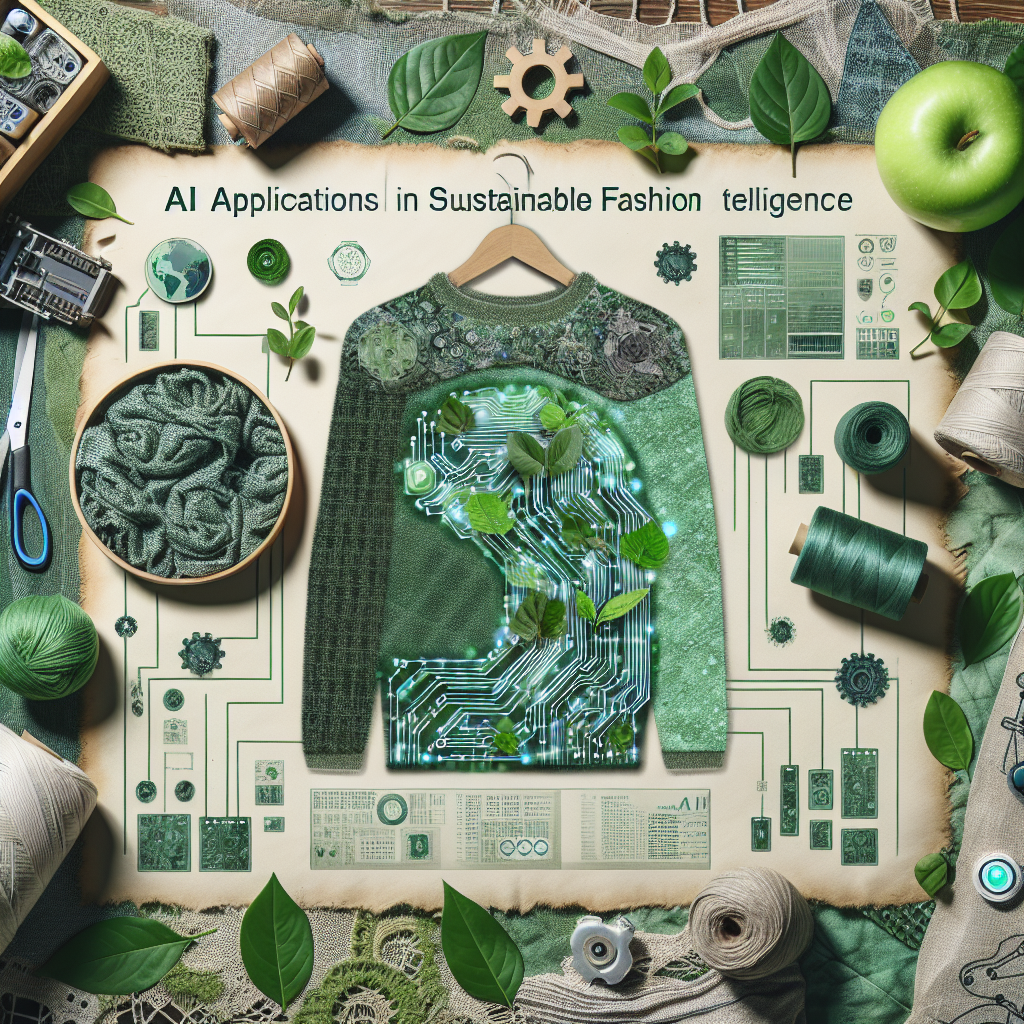Artificial Intelligence (AI) is revolutionizing the fashion industry in countless ways, including sustainable fashion design. With the increasing focus on environmental and social responsibility, fashion brands are turning to AI to help create more sustainable and eco-friendly designs. From reducing waste in production to predicting trends and improving supply chain efficiency, AI is playing a crucial role in shaping the future of sustainable fashion.
One of the key areas where AI is making a significant impact in sustainable fashion design is in the creation process itself. Traditional fashion design involves a lot of trial and error, with designers often creating multiple samples before settling on a final design. This not only wastes time and resources but also contributes to the industry’s huge environmental footprint. AI, on the other hand, can help streamline the design process by using algorithms to analyze data and generate designs that are both aesthetically pleasing and environmentally friendly.
For example, AI can analyze customer data to predict trends and preferences, allowing designers to create designs that are more likely to be well-received by consumers. This can help reduce the amount of unsold inventory, which is a major problem in the fashion industry and a significant source of waste. AI can also help optimize the use of materials, ensuring that designers use only what is necessary and minimizing waste in the production process.
Another way AI is being used in sustainable fashion design is through the development of virtual fitting rooms. These AI-powered tools allow customers to try on clothes virtually, reducing the need for physical samples and minimizing the environmental impact of the fashion industry. Virtual fitting rooms can also help reduce the number of returns, which are not only costly for brands but also have a negative impact on the environment due to the additional transportation and packaging involved.
AI is also being used to improve supply chain efficiency in the fashion industry, which is crucial for reducing waste and increasing sustainability. By analyzing data from various sources, AI can help brands optimize their production processes, reduce lead times, and improve inventory management. This not only helps reduce waste but also ensures that products are delivered to customers in a timely manner, reducing the need for expedited shipping and minimizing the environmental impact of the fashion industry.
In addition to these practical applications, AI is also being used to raise awareness about sustainability in the fashion industry. Brands are using AI-powered tools to educate consumers about the environmental and social impact of their purchasing decisions, helping them make more informed choices and support brands that are committed to sustainability. By using AI to promote transparency and accountability, fashion brands can build trust with their customers and drive positive change in the industry.
Overall, AI is playing a crucial role in shaping the future of sustainable fashion design. By helping designers create more environmentally friendly designs, optimizing supply chain processes, and raising awareness about sustainability, AI is helping to drive positive change in the fashion industry. As technology continues to evolve, we can expect to see even more innovative applications of AI in sustainable fashion design, furthering the industry’s commitment to sustainability and responsible production practices.
FAQs:
1. How is AI being used in sustainable fashion design?
AI is being used in sustainable fashion design in various ways, including helping designers create more environmentally friendly designs, optimizing supply chain processes, and raising awareness about sustainability.
2. What are the benefits of using AI in sustainable fashion design?
Some of the benefits of using AI in sustainable fashion design include reducing waste in production, predicting trends and preferences more accurately, improving supply chain efficiency, and raising awareness about sustainability.
3. How can AI help reduce waste in the fashion industry?
AI can help reduce waste in the fashion industry by optimizing the use of materials, streamlining the design process, and improving supply chain efficiency. This can help minimize the environmental impact of the fashion industry and promote more sustainable production practices.
4. How can consumers benefit from AI in sustainable fashion design?
Consumers can benefit from AI in sustainable fashion design by having access to virtual fitting rooms, which allow them to try on clothes virtually and make more informed purchasing decisions. AI can also help educate consumers about the environmental and social impact of their purchasing choices, empowering them to support brands that are committed to sustainability.
5. What is the future of AI in sustainable fashion design?
As technology continues to evolve, we can expect to see even more innovative applications of AI in sustainable fashion design. From creating more personalized and eco-friendly designs to improving supply chain transparency and accountability, AI will play a crucial role in shaping the future of sustainable fashion.

